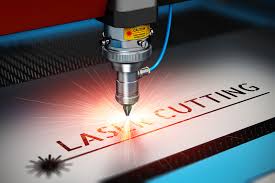The Future of Manufacturing: The Power of Laser Technology
In the realm of modern manufacturing, laser technology has emerged as a game-changer, revolutionizing the way products are made across various industries. The precision, speed, and versatility offered by lasers have opened up new possibilities and efficiencies that were once unimaginable.
One of the key advantages of laser technology in manufacturing is its ability to cut through a wide range of materials with unparalleled accuracy. Whether it’s metal, plastic, wood, or even delicate fabrics, lasers can create intricate designs and shapes with minimal waste and maximum efficiency.
Additionally, lasers are instrumental in processes such as welding, marking, engraving, and additive manufacturing. Their non-contact nature allows for cleaner and more precise results compared to traditional methods. This not only improves the quality of the final product but also reduces production time and costs.
Furthermore, laser technology enables manufacturers to achieve high levels of automation and customization. With advanced software control systems, complex designs can be executed with ease, leading to greater flexibility in production processes. This level of customization allows for rapid prototyping and on-demand manufacturing tailored to specific customer needs.
As sustainability becomes an increasingly important consideration in manufacturing, lasers offer eco-friendly solutions by minimizing material waste and energy consumption. Their precise cutting capabilities reduce scrap material significantly, contributing to a more sustainable production process.
Looking ahead, the future of manufacturing is undoubtedly intertwined with the continued advancement of laser technology. As research and development efforts push the boundaries of what lasers can achieve, we can expect even greater innovations that will further enhance efficiency, quality, and sustainability in manufacturing processes.
Embrace the power of laser technology in manufacturing today and unlock a world of possibilities for your business.
Understanding Laser Manufacturing: Methods, Top Manufacturers, Processes, and Types Used
- What are the methods of laser manufacturing?
- Who are the top laser manufacturers?
- How does laser manufacturing work?
- Which laser is used in manufacturing?
What are the methods of laser manufacturing?
In laser manufacturing, there are several methods commonly used to harness the power of lasers for various processes. One method is laser cutting, where a focused laser beam is used to precisely cut through materials such as metal, plastic, or wood. Laser welding is another method that utilizes high-energy lasers to join materials together with minimal heat-affected zones. Additionally, laser engraving involves using lasers to create detailed markings or designs on surfaces. Laser additive manufacturing, also known as 3D printing, builds objects layer by layer using a laser to selectively melt or fuse material. These methods showcase the versatility and precision of laser technology in modern manufacturing processes.
Who are the top laser manufacturers?
When it comes to the top laser manufacturers in the industry, several names stand out for their cutting-edge technology, quality products, and innovative solutions. Companies such as Coherent Inc., IPG Photonics Corporation, TRUMPF Group, and nLight are widely recognized for their expertise in manufacturing high-performance lasers across a range of applications. These industry leaders have established themselves through a combination of research and development, customer-centric approaches, and a commitment to pushing the boundaries of laser technology. Whether you’re looking for precision cutting lasers, fiber lasers, or laser systems for industrial use, these top manufacturers continue to set the standard for excellence in the field.
How does laser manufacturing work?
Laser manufacturing harnesses the power of focused light beams to perform a wide range of precision tasks in industrial settings. The process begins with a high-energy laser source that emits a concentrated beam of light. This intense beam is then directed onto the material to be processed, where it interacts with the surface to cut, weld, mark, or engrave with exceptional accuracy. The heat generated by the laser beam melts or vaporizes the material, creating clean and precise cuts or markings. Laser manufacturing offers unparalleled speed, precision, and versatility compared to traditional methods, making it a preferred choice for various industries seeking efficient and high-quality production processes.
Which laser is used in manufacturing?
In manufacturing, a variety of lasers are commonly used to meet different needs and applications. Some of the most frequently utilized types include CO2 lasers, fiber lasers, and diode lasers. CO2 lasers are well-suited for cutting, engraving, and welding materials like metal, wood, and plastics due to their high power output. Fiber lasers are preferred for their efficiency and precision in cutting thin metals such as steel and aluminum. Diode lasers find applications in areas like semiconductor manufacturing, medical devices, and telecommunications due to their compact size and reliability. Each type of laser offers unique advantages that cater to specific manufacturing requirements, making it essential to choose the right laser technology based on the desired outcome.

No Responses